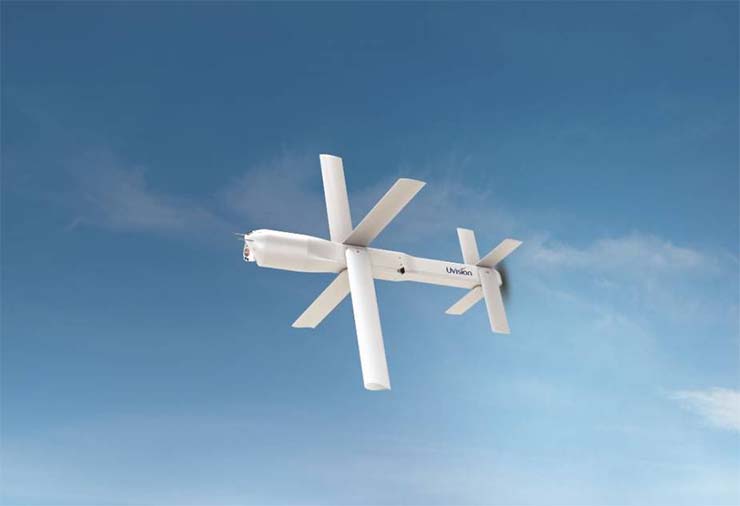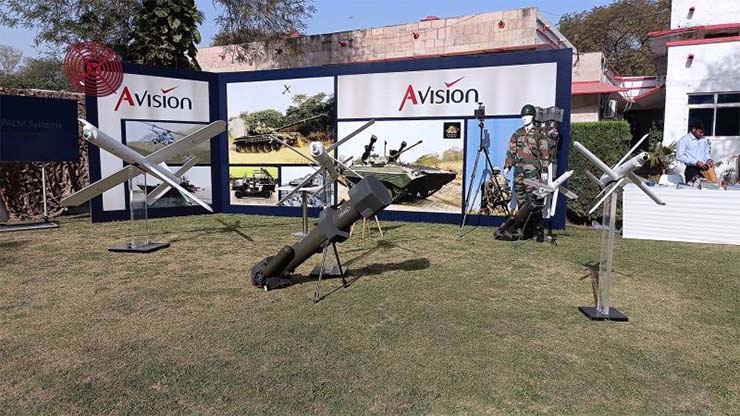
Attacks with “Precise Attack Loitering Munitions”, commonly known as ‘PALMs’, are a type of weapon that can remain in the air for an extended period over a specific region, locate and identify targets, and then launch an attack against those targets. They have a few other different names, including “suicide drones” and “kamikaze drones.” In recent conflicts, such as the war in Nagorno-Karabakh and the war in Yemen, various actors have been seen using PALMs in combat.
Once they have been launched, the ideal munition should be able to “loiter” in the air and provide the operator on the ground with real-time imagery of the target below. In addition, the loitering munition equipped with a warhead should be able to strike the target with pinpoint accuracy upon detection of the target, thereby reducing the collateral damage.
The Indian Army has struggled with a deficiency of armed drones for a very long time. The Indian armed services have been searching for a military-grade, armed remotely piloted vehicle (RPV) for a very long time. This deficiency was addressed when the PALM-400 (Precision Attack Loitering Munitions) was finally launched.
The PALM 400 claims to be an Indian product, as ‘AVision Systems’ is a joint venture between Hyderabad-based ‘Aditya Precitech Private Ltd’ and the Israeli company ‘UVision Air Ltd’. The Indian company has a long relationship of working on different missile projects with the Defence Research and Development Organisation (DRDO).
The Army selected AVision Systems after evaluating with 21 other firms in response to a global request for proposals. PALM RPVs use state-of-the-art and stabilised dual electro-optical and infrared cameras to identify and engage targets no matter the day or night. The advanced homing capabilities of this system allows excellent tracking of stationary and moving objects.
Precise Attack Loitering Munitions aka ‘PALMs, is an air borne weapon which can remain in the air for an extended period over a specific region, locate and identify targets, and then launch an attack against those targets
In situations where the system does not have access to the Global Positioning System (GPS), which is the navigational backbone for the vast majority of missile systems, the RPV is equipped with complex navigation procedures that allow it to continue operating efficiently, without relying on GPS.
The PALM 400 has a mid-air abort capability that allows for autonomous re-entry into loitering mode, re-engagement, or return to the recovery location using a parachute. During the trials that have been conducted so far, the design of the PALM 400 has shown to be exceptionally manoeuvrable.
Trials have demonstrated that the system can loiter covertly above a target, gather intelligence, and immediately launch an attack against time-sensitive threats. The adaptable warhead of the PALM 400 allows it to handle a wide variety of targets, making it advantageous not only against tactical but also strategic adversary targets.

The prototype PALM-400 is generally considered an armed remotely controlled vehicle (RPV). Designed to fly over regions where armoured vehicles are stationed, when armoured vehicles enter the kill zone, each PALM 400 selects its target and fires an armour-piercing bullet at it from the top, where there is the least amount of protection.
In February 2023, the Indian Army conducted PALM 400 trials in Sikkim’s high-altitude regions. The drones were launched from a height of 18,000 feet, hovered at 19,500 feet, and then fired a thermobaric bomb that hit a target eight kilometres away.
Indian Army’s quest for PALMs or armed remotely piloted vehicle (RPV) ended with PALM-400, (Precision Attack Loitering Munitions) was finally launched, by ‘AVision Systems’, a joint venture between Hyderabad-based ‘Aditya Precitech Private Ltd’ and the Israeli company ‘UVision Air Ltd’
PALM 400 can be launched from a canister, which has been developed in India. The PALM 400 RPV can loiter (remain on station) over a kill zone for up to 120 minutes, 3000–4000 feet above ground. It has a range of more than 100 miles and flies at a speed of 50 to 140 knots (90 to 260 km/h).
The RPVs are highly complex systems that require integrating multiple systems in accordance with various cutting-edge sensing components. The PALM 400 has some of the most cutting-edge sensors built into it, allowing it to launch attacks with pinpoint accuracy thanks to its autonomous integration. Next-generation twin electro-optical and infrared cameras, together with alternative navigation technologies, have been installed in the PALM 400.
PALMs provide an offensive edge combined with surprise element and credible attack powers. Nevertheless, they do have a number of limiting characteristics. PALMs are vulnerable to spoofing and jamming, as well as moral and legal repercussions, and they could face a wide variety of technical challenges, such as technical stings and parameters.
Many people believe that loitering munitions can bridge the gap between cruise missiles and unmanned combat aerial vehicles, despite the fact that they have significant distinctions from both these weapons.
However, the nature of contemporary conflicts and the technologies employed on the battlefield are rapidly evolving and improving. In order to make PALMs more effective and rugged enough to deal with a variety of situations, research and development activities must continue unabatedly.
India is country of varying geographies and weather patterns. The requirements of the military and the various topographies may call for additional modifications, which should be addressed at the earliest for effective exploitation of the PALMs.
-The writer is a Senior Fellow at the Centre for Air Power Studies. Prior to this he was Group Captain in the IAF. He served the IAF for more than three decades in various capacities. He was Director Air Staff Inspections and retired as Director, Joint Control and Analysis Centre. The views expressed are personal and do not necessarily reflect the views of Raksha Anirveda








